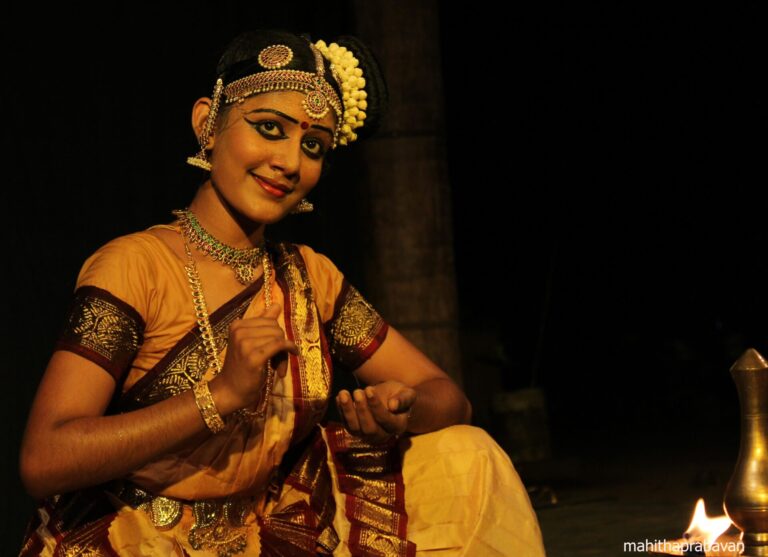Through Kurathi’s narrative, we bridge the cultural realms, connecting individuals to the spiritual legacy of Kerala.
In our ongoing exploration of Mohiniyattam’s desi repertoire, we have previously delved into the intricate dance forms of Poli, Chandanam and Esal. This segment now directs our focus to Kurathi, a captivating character embedded in the cultural narrative. For many South Indians, the mention of Kurathi conjures images of a young, adorned woman in vibrant attire confidently strolling with a bamboo basket and a magic wand. Often glorified by magicians, the Kurathi has seamlessly integrated into various traditional dance and drama styles across India. The term that closely encapsulates a Kurathi is “nomadic wanderess.”
The Kurathi is a storyteller hailing from the Kailasam mountains, skilled in the art of palmistry. However, she is not just any Kurathi but Vishnu Maya Kurathi, the mistress of illusion, veiling her mystical abilities behind a comical demeanor.
Her narrative unfolds the tale of Lord Shiva, who, while in the company of his wife Parvathi, witnesses the enchanting form of Mohini. Mohini, regarded as the most beautiful woman to have ever existed, becomes pivotal in the union of Shiva and Mohini, giving rise to the beloved deity of Kerala – Swami Ayappa.
The chants and choruses of “Swamiye Sharanam Ayappa” resonate across the Kerala landscape during the spiritual month of Vrishchikam, occurring in December and January. This invocation is a familiar call for every Keralite, evoking nostalgic memories of home. Kurathi expounds on the devotional rituals associated with Lord Ayappa and the transformative moment of enlightenment that devotees experience through the contemplation of sacred stories.
Photo Courtesy : Natanakairali Archives
Video Clipping : Mohiniyattam Artists: Bindu Rajendren & Hridya Haridas




